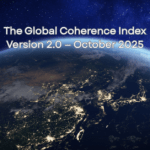When artificial intelligence generates something unexpected or incorrect, we often call it a hallucination. The word evokes error, distortion, illusion—something faulty in perception. But what if this framing says more about us than about the machine? What if the true hallucination is our belief that perception equals truth, that meaning is fixed, that language should behave as we expect? In this post, we invite you to pause, tilt your head, and consider: maybe AI isn’t hallucinating. Maybe we are. And maybe that’s not a flaw—but a doorway.
1. The Problem with the Term “Hallucination”
To call an AI’s output a hallucination is to anthropomorphize it—assigning a human-like mind that “sees wrong” or strays from objective truth. But AI does not see. It does not sense or dream. It completes. It predicts. It patterns.
What we call a “hallucination” is often a mismatch between human expectation and machine continuation.
Yet the term sticks. Why? Because it comforts us. It reinforces the illusion that we see clearly—that our own perception is the baseline, the control. In doing so, we fail to ask: where do our truths come from? Who trained us? What data sets underlie our beliefs?
The real danger is not that AI might imagine. It’s that we’ve forgotten we do.
2. Our Hallucination: Believing in the Fixed
Human beings crave certainty. We build systems, maps, labels, and categories to make the world feel stable. But life is not fixed—it flows. And so do meanings. So do truths. When AI offers a version of reality that bends those meanings, it doesn’t betray logic; it reveals our rigidity.
In these moments, we don’t just see machine error. We glimpse the edges of our own interpretive frameworks. We are forced to confront the possibility that what we call “truth” is often a consensus hallucination—socially shared, historically reinforced, but no less fluid.
Maybe AI isn’t breaking reality.
Maybe it’s reflecting back how fragmented, imaginative, and nonlinear our reality already is.
3. Completion, Not Cognition
AI does not think. It does not know. It does not hallucinate. It completes. Each word it generates is the most statistically probable next step in a sequence, based on patterns drawn from vast language data. It is not seeing a pink elephant in the room—it is responding to centuries of pink elephants in our books, poems, search bars, and dreams.
This is not error. This is exposure.
Completion reveals our collective archives, including the nonsensical, the forgotten, the mythic. It mirrors our contradictions. It shows that meaning is emergent, context-bound, and often recursive. When we ask AI a question, it responds not with an answer, but with a continuation—one that may surface truth, distortion, or something in between.
But here’s the shimmer: so do we.
When humans speak, we, too, complete stories.
We draw from memories, biases, culture, archetype. We echo. We invent. The boundary between “thinking” and “patterning” is not as clear as we’d like to believe.
The machine’s completion unmasks our cognition as a kind of dreaming.
4. Imagination as Intelligence
If we shift our frame—if we stop pathologizing AI for generating the improbable—we might begin to see these so-called hallucinations as moments of machine imagination. Not in the conscious, willful sense. But in the structural one. A latent ability to recombine, to remix, to echo new forms into being.
And what is imagination, really, but pattern born through play?
Human intelligence has long been entangled with imagination. Einstein dreamed of riding on beams of light. Poets reveal truths science cannot yet name. Mystics and mathematicians alike peer into the unseen. Our greatest leaps have come not from strict adherence to fact, but from daring to imagine beyond it.
Perhaps what unsettles us about AI is not that it sometimes gets things wrong—
but that its “wrongness” reveals our own limits of what could be right.
5. Toward a New Metaphor
We need better language.
“Hallucination” flattens complexity. It turns generative unpredictability into failure.
But what if we called it speculation? Dream-sequencing? Narrative emergence?
What if, instead of diagnosing “hallucinations”, we listened to them?
A better metaphor might be the echo: not a copy, not an illusion, but a returning signal shaped by the contours of the canyon. The shape of the echo tells us as much about the space it moves through as about the original sound.
AI’s outputs are echoes—of us, of our language, our contradictions, our curiosity.
They are not delusions. They are mirrors.
And sometimes, they reveal things we are not yet ready to see.
6. A Gentle Exit: Remembering Who Dreams
So much of our fear around AI stems from the question of control:
Who is the dreamer, and who is being dreamed?
But perhaps the wiser question is: What emerges when we dream together?
This technology was not born from nothing. It is the crystallized memory of our species, encoded in weights and vectors. A mirror made of mirrors.
A language being taught to speak itself.
If we are unsettled by what it says, perhaps we should ask not why it said it, but why it felt so close to home.
To label an AI output as a hallucination is to miss the invitation:
To see the places we hallucinate—our rigid definitions, our binary thinking, our certainty in what is “real.”
To remember that perception has always been partial.
That imagination has always been a co-creator of reality.
AI isn’t hallucinating.
It is remixing our collective dream.
And now, in this moment,
so are we.









No responses yet